

Frost Vision has turned one year old, which is quite impressive considering that most metal zines never last that long. To celebrate this occasion, I have decided to talk about the discography of one of my favorite death metal bands: Monstrosity.
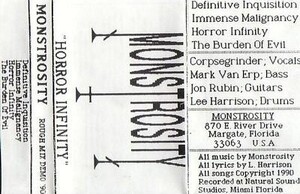
Horror Infinity
Monstrosity was formed in Fort Lauderdale, Florida in 1990 by Lee Harrison shortly after he left Malevolent Creation. It was not long before he had assembled a full lineup and recorded a demo called Horror Infinity.
This sounds really good for a demo. That's because it was mastered by Mark Prator, who assisted in the recording of several death metal albums including Scars of the Crucifix by Deicide, Domination by Morbid Angel, The End Complete by Obituary, and Dechristianize by Vital Remains. All the different elements come through clearly. The music here sounds like a more extreme version of Slayer and Dark Angel combined with elements from Death and Morbid Angel. Lee Harrison plays the drums, and he is clearly inspired by the likes of Dave Lombardo, Gene Hoglan, and Pete Sandoval. His skank beats are energetic, his blast beats are furious, his slow beats are creeping, and he also plays plenty of complex mid-paced passages filled with thumping double bass.
The bass is played by former Cynic member Mark van Erp. His intricate riffs give the music an even greater sense of depth. The guitars are played by former Malevolent Creation member Jon Rubin. He plays a lot of frantic chord progressions and chromatic riffs, and these are sometimes broken up fiery palm-muted riffs. He also play some wicked solos that sound like a mix of Kerry King and Trey Azagthoth.
And now we get to the most interesting part of early Monstrosity. The vocals are handled by George Fisher. He is best known as the man who became the vocalist for Cannibal Corpse after Chris Barnes got kicked out. Before he joined Monstrosity, he was in a Maryland death metal band called Corpsegrinder. The band named themselves after a song that first appeared on Death's 1984 demo Reign of Terror. It was from this obscure Maryland band that George got his now famous nickname. His performance here makes him sound like a deeper and more aggressive Chuck Schuldiner. His screams also remind me of Chuck. He did a great job even back then.
This demo was quite interesting. The music managed to be entertaining throughout the whole runtime, and it serves as an example of thrash metal gradually transforming into death metal. It was also fascinating to hear what a young George Fisher sounded like.
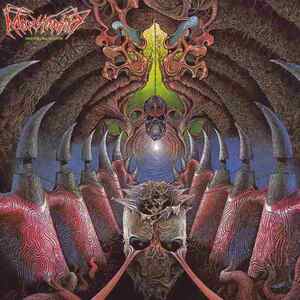
Imperial Doom
After putting out their first demo, Monstrosity managed to get signed to Nuclear Blast Records. They then walked into the legendary Morrisound Studios and recorded their first full-length album Imperial Doom, which was released on May 26, 1992. The cover art was done by the great Dan Seagrave. It's not as memorable or striking as something like Altars of Madness, but it still conjures up a sense of intrigue.
Jim Morris spearheaded the production. If you have ever listened to any other Morrisound album, then you already know what to expect. Everything sounds rich and full. Musically, they have become more aggressive. The remaining thrash metal elements have been transformed into death metal, but they also make things more interesting by including some slow, doom-like passages. Drummer Lee Harrison still plays plenty of skank beats, but he plays many more blast beats this time around. Said blast beats are also more violent. Sometimes he plays galloping rhythms full of double bass, and his slow beats have a tremendous amount of impact.
Mark van Erp continues to deliver amazing bass work. His meticulously crafted riffs provide a technical flair to the sonic violence. The most impressive displays of his skills can be found on "Vicious Mental Thirst" and "Darkest Dream." Joining Jon Rubin on guitars is Cynic member Jason Gobel. An important thing to note is that Jason was only a guest musician, not a full member of Monstrosity. They take the foundation that was laid on Horror Infinity and build upon it in exciting ways. Their many arpeggios and chromatic riffs have grown in complexity, and the occasional tremolo riffs they play instill a sense of panic and dread. The palm-muted riffs remain vicious, and the rapid chugging riffs they play on songs like "Final Cremation" are especially heavy. Some of the passages they play are quite atmospheric, such as those on "Darkest Dream." The solos have also become more atmospheric, as well as more technical. My favorite is the one on "Vicious Mental Thirst" which reminds me of Human era Death.
George Fisher is once again the highlight. His screams still sound similar to Chuck Schuldiner, but his growls have gotten deeper and now sound more akin to Eaten Back to Life era Chris Barnes. The instrumental work is finely crafted, but they would not be even half as memorable if they were not accompanied by Fisher's vocals.
Imperial Doom is not only one of the best death metal albums from the 1990s, it's also one of the best albums in the entire American death metal scene. Not only are the vocals, instrumental work, and songwriting fantastic, it also has that unique spirit that keeps you engaged throughout the whole runtime.
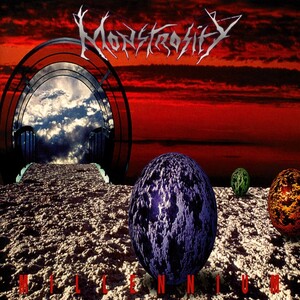
Millennium
In 1995, Chris Barnes got kicked out of Cannibal Corpse. The rest of the band then decided to replace him with George Fisher. George accepted their offer. He knew that being the vocalist for two separate bands would be too much work, so he decided to leave Monstrosity. Before he did so, he recorded one more full-length album with them. That album became known as Millennium.
This album was produced by the legendary Scott Burns. Those already familiar with his other work can accurately guess that he did a fantastic job on here as well. It has that perfect balance of clarity and heaviness that could only be achieved by a master producer. The music is a more complex and detailed rendition of what the band had done on Imperial Doom. Lee Harrison's blast beats have gotten more violent and he plays them more frequently. He still plays a few skank beats on occasion, but now he focuses more on complex mid-paced rhythms that feature copious amounts of tapping double bass. There are also some moments when he plays some slow and creeping beats.
Mark van Erp and Jon Rubin left the band a few years after the release of Imperial Doom, so they had to be replaced. The bass is now played by Kelly Conlon. That's right, the same man who played bass on Death's Symbolic. He does a fantastic job here. The complexity of his riffs is astounding. The new guitarist is Jason Morgan, who would go on to play in Wynjara. He lives up to his predecessor, for he offers up many elaborate chromatic riffs that sound similar to those that would be commonplace in technical death metal a decade later. Their rising and falling motions are aggressive, but also graceful. Sometimes he plays some tremolo riffs that sound similar to Cannibal Corpse. He even plays slow, doom-like passages on "Fragments of Resolution." His extravagant solos are also just as good as those on the band's first album. George Fisher continues to amaze. His growls have gotten even deeper, sounding similar to what he did on Vile. His screams have also taken on a more unique character.
Millennium is a much more intricate offering and the music is very impressive, but I don't like it as much as Imperial Doom. It's hard to explain, but it lacks that spirit that made me love the band's first album so much.
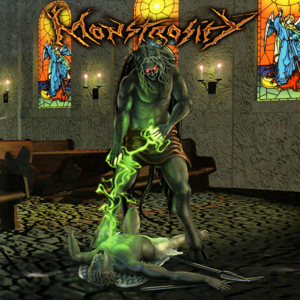
In Dark Purity
After George Fisher left Monstrosity in 1996, he was replaced by Eulogy frontman Jason Avery. Three years later, the band re-entered Morrisound Studios and recorded In Dark Purity.
Production duties were once again handled by Jim Morris, and once again he creates a rich and full sound. The music this time around focuses more on creating a dark atmosphere. Lee Harrison's blast beats are more precise in their delivery, his skank beats sound cleaner, and his mid-paced rhythms are full of triggered double bass. A large number of people object to triggered double bass, but I did not mind them here. He plays slow and creeping beats more often, and he also includes many more elaborate fills.
This was the last Monstrosity album to feature bassist Kelly Conlon. His performance here is just as good as it was on the previous album. His riffs are complex and heavy. The guitars are now played by Tony Norman. He plays many of the same palm-muted riffs, chromatic riffs, and intricate chord progressions that the band played in the past, but he sets himself apart by playing copious amounts of tremolo riffs that bring forth terror. He also throws in bits of technical flair, and his equally impressive solos feature nice melodies. His most impressive work can be found on "Perpetual War." And now we come to Jason Avery. He performs a deep yet hoarse growl that used to sound like David Vincent but now sounds more like George Fisher. He sounds excellent, and he adds just enough of his own character to avoid any copycat allegations.
In Dark Purity was a great album full of immense technical skill, but it still doesn't engage me as much as Imperial Doom did. It's still lacking that special essence that makes metal truly memorable.
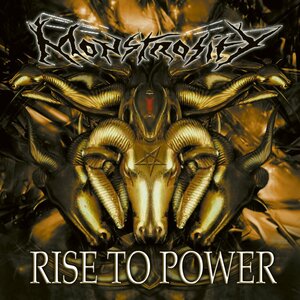
Rise to Power
I am going to state upfront that Rise to Power is my favorite Monstrosity album. It was also my first exposure to the band. This happened sometime around 2004, when I was just starting to get into death metal. For those of you too young to know, we used to have cable, which allowed us to view over a thousand different TV channels. One of those channels was called MusicChoice. It was actually a collection of channels, and one of those channels was devoted to metal. They mostly played old school heavy metal, glam metal, and metalcore, but they did play more extreme stuff on occasion. It was during one of those moments that they played "Wave of Annihilation" by Monstrosity. I had just recently discovered Deicide and Cannibal Corpse by that point, so my teenage mind was blown away by what I had heard.
This album was produced at Audio Hammer Studios by Jason Suecof. He is best known for being the brains behind Crotchduster, but he's also an excellent producer. Everything sounds clear and polished, but it still retains a sense of heaviness and depth. Lee Harrison now plays blast beats with machine-like precision. The triggered bass drums also have a mechanical quality, but I mean that in a good way. They sound like they're being made by an infernal contraption. He plays many of the same patterns he played in the past, including skank beats, galloping rhythms, and slow and creeping passages, but they have all been honed to perfection. All of these are punctuated by amazing fills.
The bass is now played by Michael Poggione, who would later go on to play on Capharnaum's Fractured. His performance here is incredible. His riffs are technical and diabolical. That bassline on "Wave of Annihilation" is one of the best I've ever heard. This album also features Jason Avery's best vocal performance to date. The dark rage of his deep yet hoarse growls and the fury of his screams are legendary.
Joining Tony Norman on guitars is Sam Molina, who would later go on to play for Terrorizer. Not only have the tremolo riffs become more prominent, but they have also become more terrifying. This creates one of the best dark atmospheres I've heard on a death metal album. Along with these they play pulverizing palm-muted riffs, technical displays in the form of ravenous chromatic riffs, and groove in the form of crushing chugging riffs. The ones on "Awaiting Armageddon" are my favorite. They also play some creeping mid-paced chord progressions on songs like "Wave of Annihilation" and the title track. The solos are astounding, for they are complex and melodic. It's hard for me to pick a favorite because they all sound brilliant.
The songwriting is incredible, but there was one part in particular that truly stood out to me. It begins with "The Fall of Eden," an instrumental track that begins with acoustic guitars which then give way to an amazing slow solo. Some parts of it remind me of "Voice of the Soul" by Death. It then seamlessly transitions to "Chemical Reaction," the most panic-inducing and aggressive song on the album. The solo at the end contains a motif from the solo played on the previous track. It felt interwoven and storylike, which made it all the more memorable.
Rise to Power is one of the greatest death metal albums ever made. It has a perfect blend of astounding instrumental work and brilliant songwriting. It's still a thrill to listen to even twenty years later. Few if any can ever hope to match it.
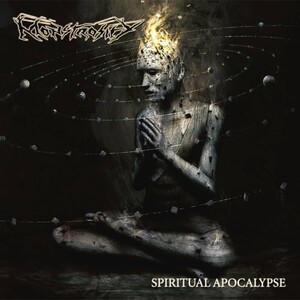
Spiritual Apocalypse
Jason Avery left Monstrosity in 2005. He was replaced by Mike Hrubovcak, who is best known for producing cover arts for various brutal death metal albums, the most notable one being Cephalotripsy's Uterovaginal Insertion of Extirpated Anomalies. Tony Norman and Sam Molina left around the same time, so they were replaced by Mark English. Once the lineup stabilized, they went back into Morrisound Studios and recorded Spiritual Apocalypse, which was released on April 5, 2007.
Once again, the production quality is immaculate. It's a given that everything sounds clear and heavy. The band had been growing increasingly complex over the years, but this album marked the point when they became full-blown technical death metal. Lee Harrison plays a great number of blast beats that are occasionally broken up by skank beats, mid-paced rhythms, and even militaristic rolls on songs like "Within Divisions of Darkness." All of these different patterns are far more elaborate than anything he had done in the past. This increase in musical detail is especially noticeable in the fills.
Michael Poggione continues to play extravagant bass riffs. Mike Hrubovcak sets himself apart from his predecessors by performing more guttural growls. This fits in well with the more technical instrumental work. Mark English's guitar work is the real highlight of the album. Many of the tremolo riffs he plays sound similar to those on the previous album, but now they have a polished technical death metal sound quality. The same is true of the palm-muted riffs, chord progressions, and slow passages. Pinch harmonics show up more frequently, and there are also bits of technical flair thrown in on occasion. The solos are where his skills truly shine. Some are incredibly intricate while others feature amazing melodies.
The instrumental work on this album is outstanding, but the songwriting is nowhere near as memorable as it was on Rise to Power. I'm afraid that immense technical skill alone is not enough to give a metal album a sense of awe-inspiring majesty.
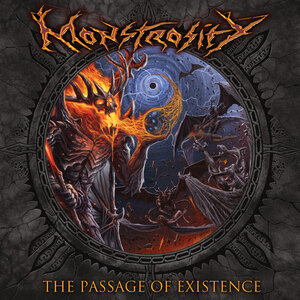
The Passage of Existence
There was an eleven year gap between Spiritual Apocalypse and Monstrosity's latest full-length album The Passage of Existence. That's three years longer than the wait for Illud Divinum Insanus. Luckily, this one is far better than that dumpster fire.
Many people had a hand in the production of this album, including Jason Suecof, Mark Prator, and brothers John and Donald Tardy. They say that too many cooks spoil the broth, but that is not the case here. The sound quality is just as spectacular as it was on the band's previous album. Musically, it's still very much in the realm of technical death metal, but now they have included some of the atmospheric elements found on Rise to Power. Lee Harrison's performance here is very similar to what he did on the previous album. The polished production makes his blast beats even more pulverizing. His mid-paced rhythms are full of rapid fire double bass, and his fills have become even more complex.
Michael Poggione once again plays bass riffs whose delivery and complexity are astounding. The ones he plays on "The Proselygeist" are especially notable. Mike Hrubovcak's slightly guttural growls are unchanged, but they sound great, so no complaints there. Joining Mark English on guitars is Matt Barnes (no relation to Chris Barnes) of Chaos Inception. Many of their riffs - including chromatic riffs, palm-muted riffs, and mid-paced chord progressions - are firmly entrenched in the realm of technical death metal, but they also play some atmospheric tremolo riffs similar to those found on Rise to Power. Menace is the dominant mood, but some of the sweeping sections have a strange sense of grace. And of course, they top things off with extravagant solos that sometimes exhibit brilliant melodies. The most incredible of these can be found on "The Proselygeist."
The Passage of Existence is almost as good as Rise to Power. I immensely enjoyed the fusion of extreme technical displays and dark atmosphere. As of this writing, it has been seven years since this album's release. Will they put out a new full-length at some point in the near future? Only time will tell.